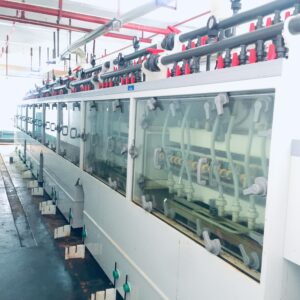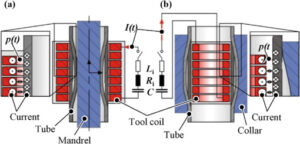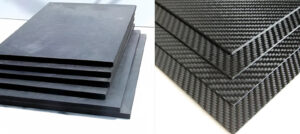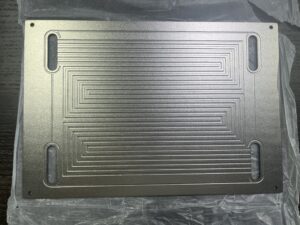Fuel cells are helping us move toward clean energy, and at the center of every fuel cell is its main element, the bipolar plate. They move heat, send electricity, and hold the building or structure together. Since people are looking for better, more durable, and more affordable fuel cells , the race to improve metal bipolar plate manufacturing processes is becoming stiffer.
.
A Quick Guide to Bipolar Plate Materials
About two-thirds of the market consists of steel and composite plates. All of them have advantages. High conductivity and strong structure are features of metal plates , while composite plates are much easier to carry and are corrosion-resistant. Combining good performance, strong durability, and low cost is what companies strive for.

Issues in Metal Bipolar Plate Manufacturing Processes
Making thin metal sheets with precisely defined flow field designs is very difficult. The metal has to stay strong to avoid cracks, while making the flow channels requires special approaches. That is why it is so important to find cheap and expandable ways to do this.
High-Velocity Electromagnetic Forming (HVEF)
That’s when High-Velocity Electromagnetic Forming (HVEF) earned a big name. With HVEF, magnetic pulses transform metal sheets without touching them. This approach lowers mechanical force and allows for finer work.

Collaboration with the Department of Materials Science and Engineering
One company connected with a university’s Department of Materials Science and Engineering won a government grant of $9 billion to progress HVEF from concept to the market. The completed project confirmed that the fabrication produces strong metal sheets with various shapes.
How HVEF Can Be Cost-Effective
Even without knowing the exact cost data, it’s likely that the machine’s benefits of less wear, less energy used, and faster times will translate into significant savings. HVEF is likely to cut production costs far more than traditional stamping or hydroforming.
Alternative Manufacturing Processes
Microelectronics Techniques
Borrowing from microelectronics, scientists make detailed patterns of the flow fields possible with excimer laser lithography. Although the equipment is very costly initially, building things in bulk could make each piece much more affordable, just like with chips.

Sputtering with Magnetrons used on Polymer Substrates
In this case, magnetron sputtering is used to place a layer of conductive metals, such as copper or silver, on polymer surfaces using a sandwich structure approach. As a result, the plates are made from light materials that cannot corrode and are decent conductors.
Plate Production
Composite plates made from thermoplastic material
An important advance has been made with microcomposite technology. Here, PVDF is mixed with graphite flake powder to form a composite. By hot press or extrusion, the plates have excellent electrical performance and are excellent for places that require strong conductivity.
Carbon/Carbon Composite Plates
They stand up to high heat and also have excellent electrical conductivity. Despite that, their cost and complexity restrict their availability to specific tasks.

Industry-Wide Competition
Realizing the profit in fuel cells, businesses are focusing on exploring and improving bipolar plates. Three recent projects have been financed: one dealing with metal plates coated with innovative materials and the other two involving thermoplastic and carbon composite plates. The close battle between the main players is speeding up innovation.
How Do We Assess How Plates Work
The best bipolar plate should be:
- High electrical conductivity detected (measuring over 250 S/cm)
- Materials with thermal conductivity greater than 100 W/m·K
- Strong corrosion resistance is especially vital when substances are acidic.
- Strength testing for bending and the inability for gases to pass
Because of these factors, the efficiency, ongoing use, and maintenance of fuel cells can be affected.
Commercial Viability and Scalability in Metal Bipolar Plate Manufacturing Processes
Although there are interesting prototype metal bipolar plates , most have not been used in commercial fuel cells. The short testing period of in-situ experiments, just a few months typically, makes it difficult to expect results for engines running over 5,000 hours. Recent and reliable long-term estimates for how long materials last were needed for entering the market.
Economic Impact
Fuel cells around the world are expected to exceed $25 billion in value by 2030. If bipolar plates can be produced cheaply and efficiently, they could be used more broadly in cars, devices for backup energy, and small devices. It is especially important to reduce your plate costs below $5 per kilowatt.

Future Outlook
There is a lot of possibility ahead for all of us. Data indicate that the future of plating may lie with metals that absorb gas easily and coatings on lightweight metals. We are now seeing more examples of using both metals and composites in designs.
Conclusion
Improving the design of a perfect fuel cell bipolar plate also means helping to advance the future of clean energy. The variety of materials and ways to produce cars is pushing companies to innovate fast. Solutions such as HVEF, microlithography, and microcomposites all share a main goal: making plates that can power our hydrogen economy with strength, efficiency, and affordability.
FAQs
What does HVEF accomplish in the process of making metal plates?
Shape cutting with HVEF causes no mechanical stress and provides both more accurate results and lower production costs.
Why do we keep using composite plates?
They are very light, won’t corrode, and costs can go down if the right methods and materials are used in their creation.
In what way does laser lithography help with flow field design ?
Detailed and uniform pathways in the gas channels lead to more efficient distribution of gas in fuel cells.
What are the difficulties associated with polymer/metal plates?
These are light and do not rust, yet their conductivity is not the same as that of standard metal.
What manufacturing approach appears to be the strongest?
HVEF is still in the lead now because it is fast, accurate, and flexible, but new advances in composites are narrowing the difference.

